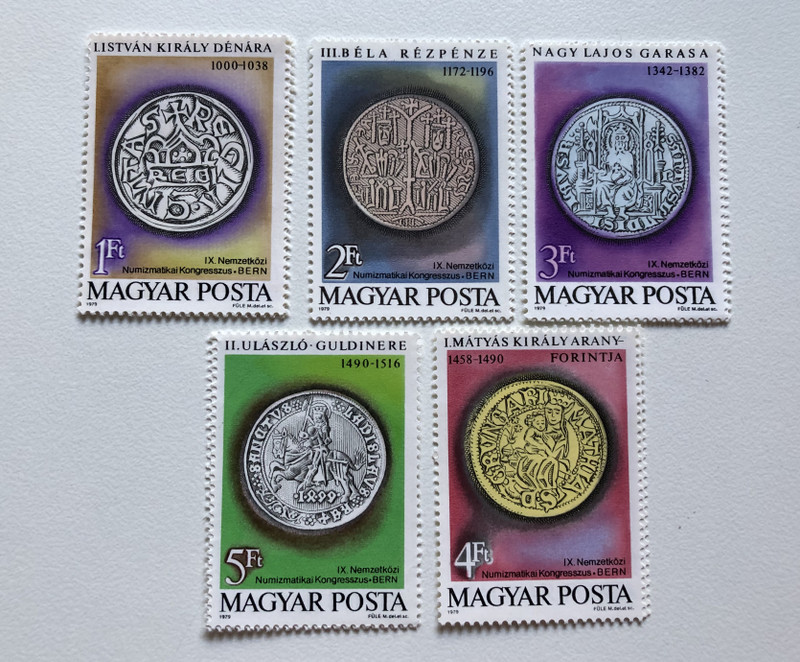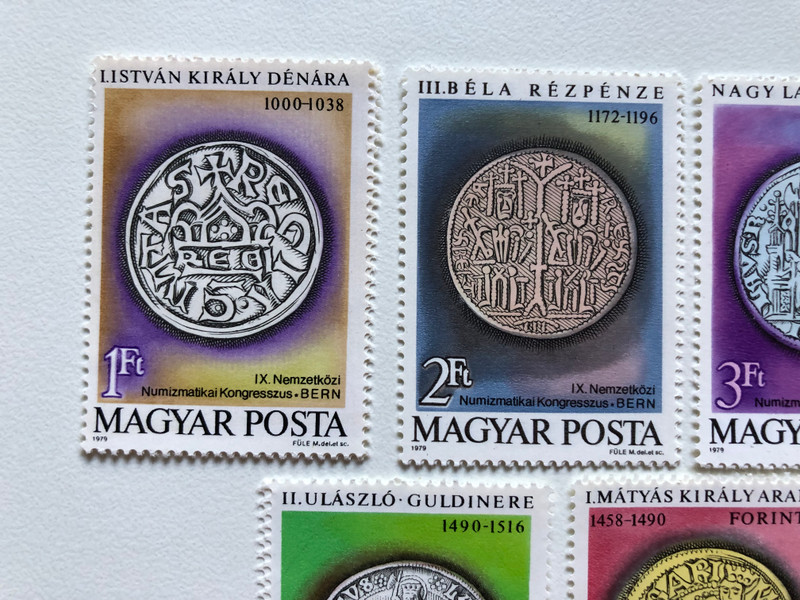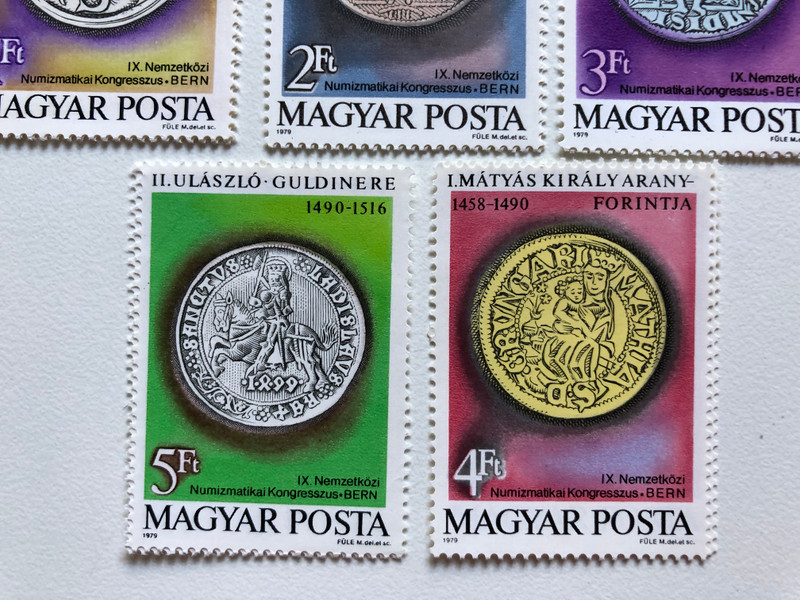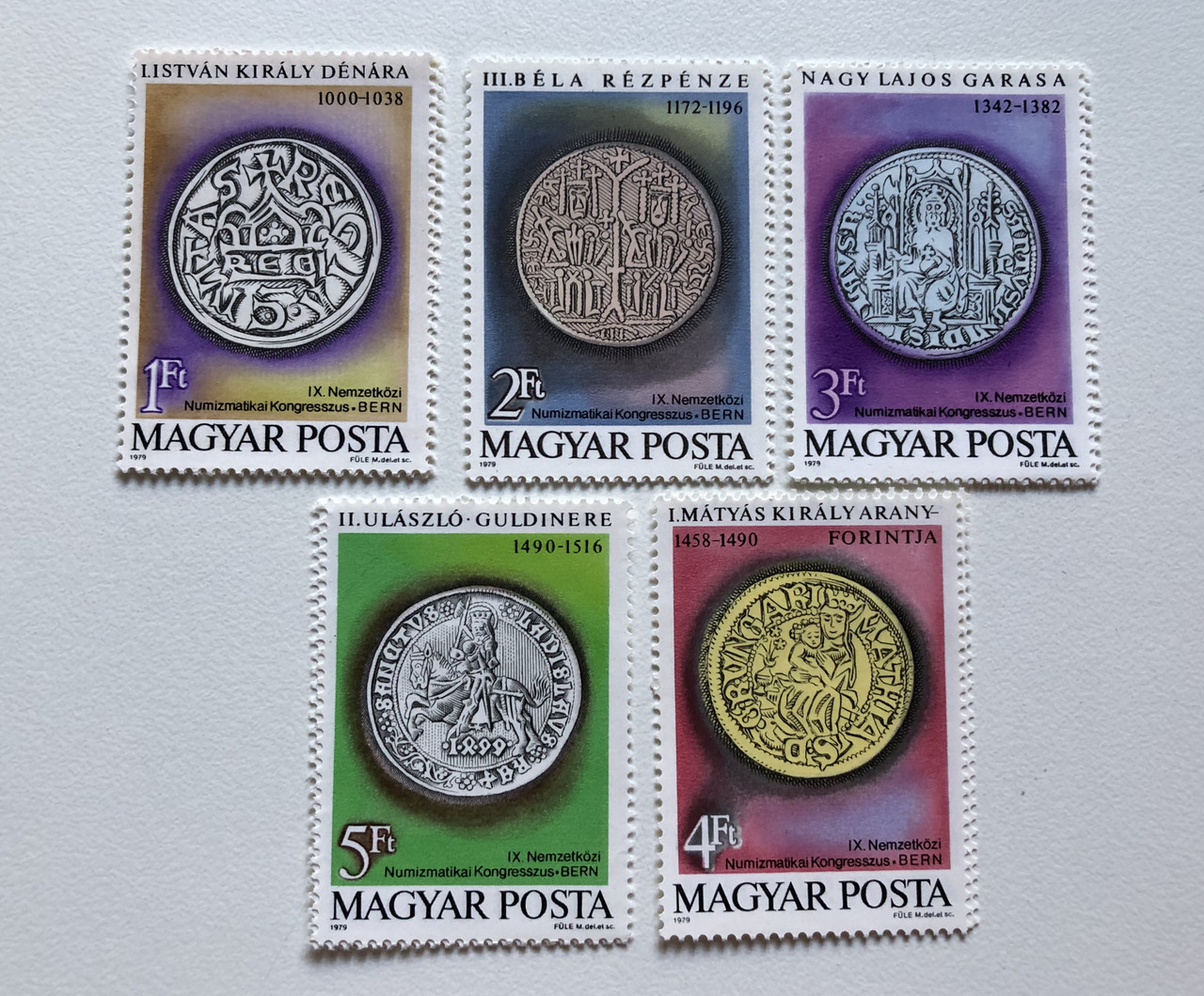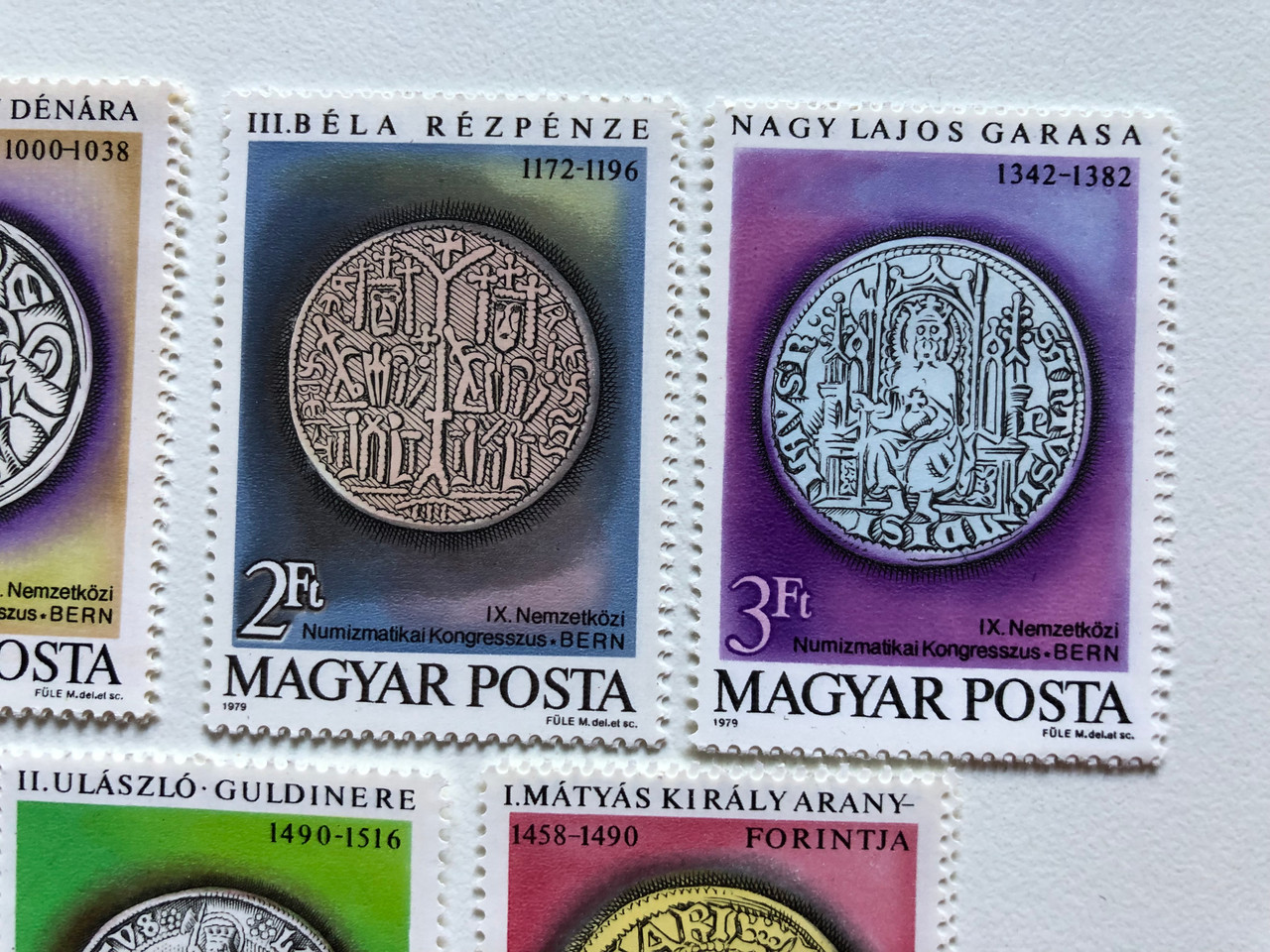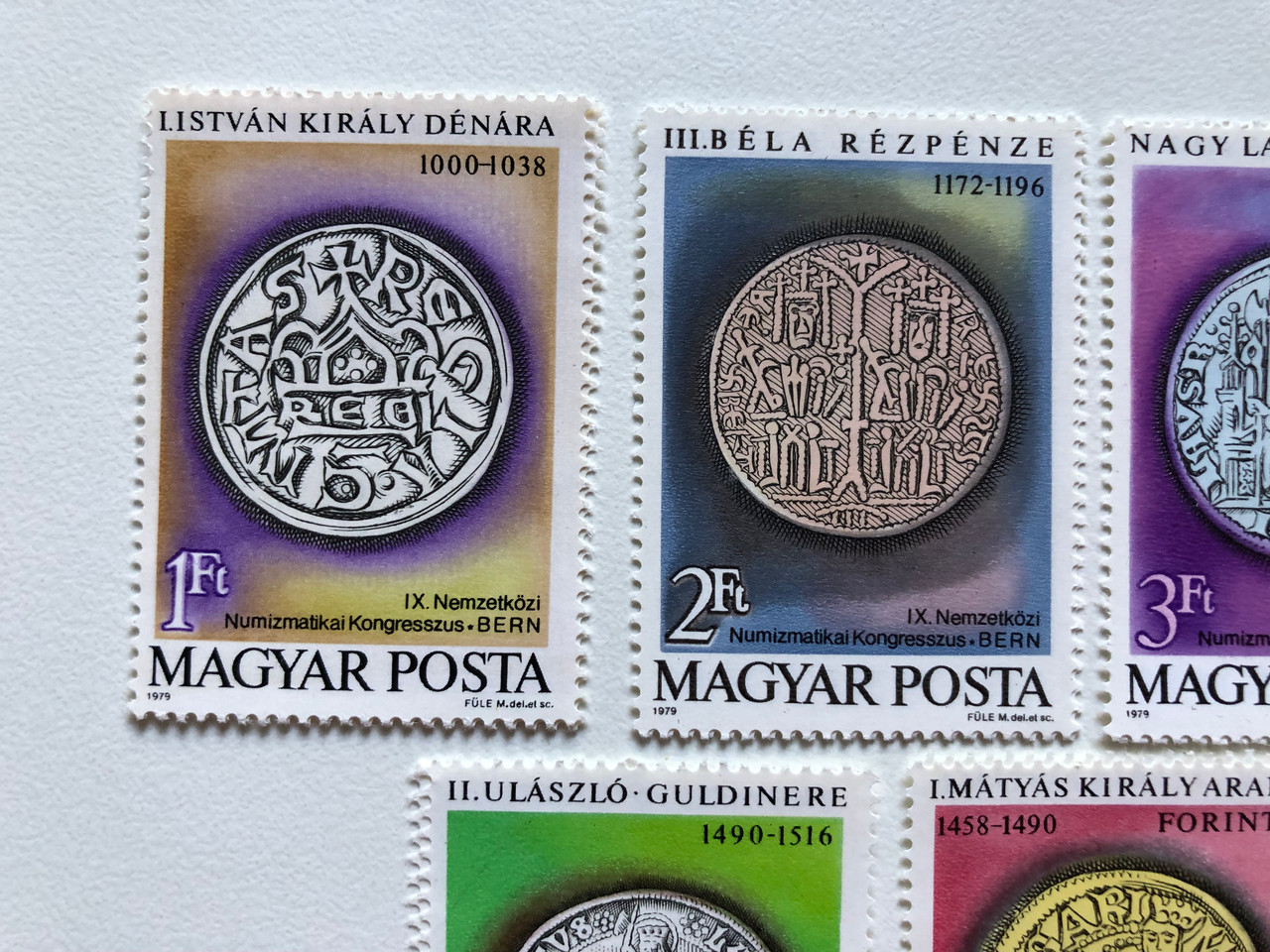Description
MAGYAR POSTA / IX. Nemzetközi Numizmatikai Kongresszus BERN (IX International Numismatic Congress BERN) / LISTVÁN KIRÁLY DÉNÁRA 1000-1038 / III.BÉLA RÉZPÉNZE NAGY 1172-1196 / NAGY LAJOS GARASA 1342-1382 / II.ULÁSZLÓ GULDINERE 1490-1516 / I.MÁTYÁS KIRÁLY ARANY 1458-1490 / Stamp
Postage stamp issued by Hungary in 1979. It commemorates the 9th International Numismatic Congress, which was held in Bern, Switzerland, from August 27 to September 1, 1979. The congress was a gathering of scholars and experts who discussed various topics related to the study of coins, medals, and other forms of money. The stamp features the artwork of Listván Király, a Hungarian painter and stamp designer who specialized in historical and numismatic themes. The text lists the name of the country, the name of the congress in Hungarian and English, and the names and dates of five types of coins that are depicted on the stamp:
- Dénár: a silver coin that was used in Hungary from the 10th to the 16th century. The coin has a value of one penny and weighs about 0.8 grams. The coin features the bust of King Stephen I, the first king of Hungary, who ruled from 1000 to 1038. The coin also has the inscription “REX STEPHANVS” (King Stephen) and a cross with four dots.
- Rézpénz: a copper coin that was used in Hungary from the 12th to the 16th century. The coin has a value of one quarter of a penny and weighs about 1.5 grams. The coin features the bust of King Béla III, who ruled from 1172 to 1196. The coin also has the inscription “BELA REX” (King Béla) and a cross with four crescents.
- Garas: a silver coin that was used in Hungary from the 14th to the 16th century. The coin has a value of six pennies and weighs about 4.8 grams. The coin features the bust of King Louis I, also known as Louis the Great, who ruled from 1342 to 1382. The coin also has the inscription “LUDOVICUS REX” (King Louis) and a coat of arms with four lions.
- Guldiner: a gold coin that was used in Hungary from the 15th to the 16th century. The coin has a value of one florin or one ducat and weighs about 3.5 grams. The coin features the bust of King Vladislaus II, also known as Ulászló II, who ruled from 1490 to 1516. The coin also has the inscription “WLADISLAVS REX” (King Vladislaus) and a coat of arms with an eagle and an angel.
- Arany: a gold coin that was used in Hungary from the 15th to the 16th century. The coin has a value of one florin or one ducat and weighs about 3.5 grams. The coin features the bust of King Matthias I, also known as Matthias Corvinus, who ruled from 1458 to 1490. The coin also has the inscription “MATTHIAS REX” (King Matthias) and a coat of arms with a raven holding a ring.
The stamp is part of a series of four stamps that depict different aspects of Hungarian numismatics. The other stamps feature medals, seals, and banknotes.

